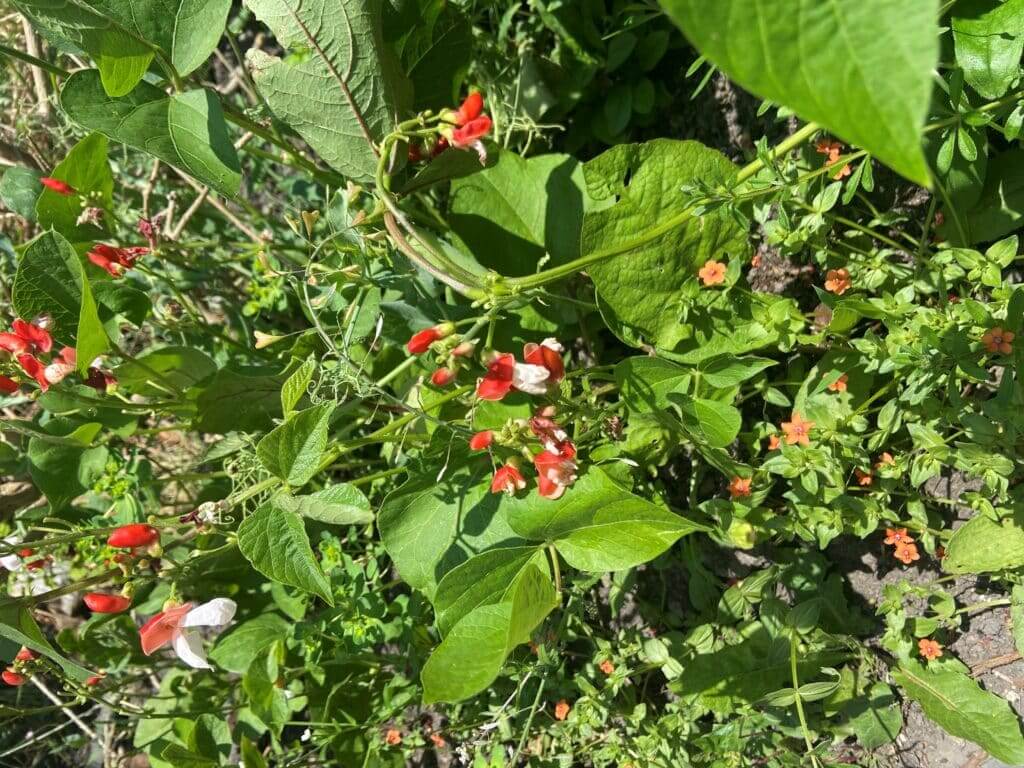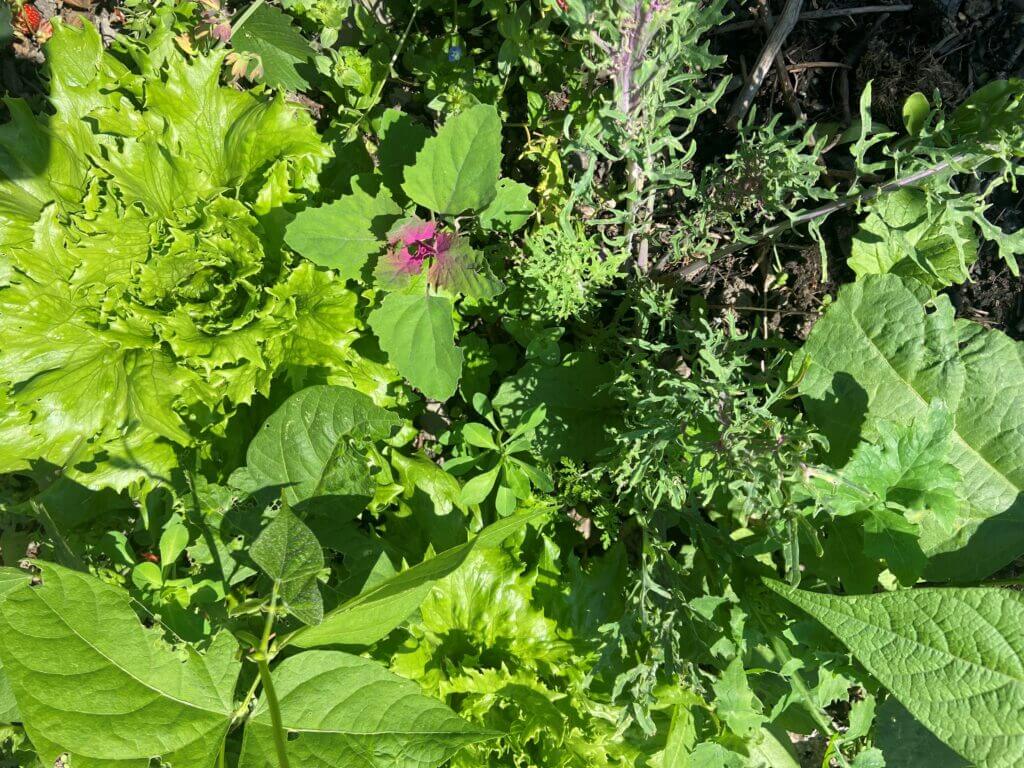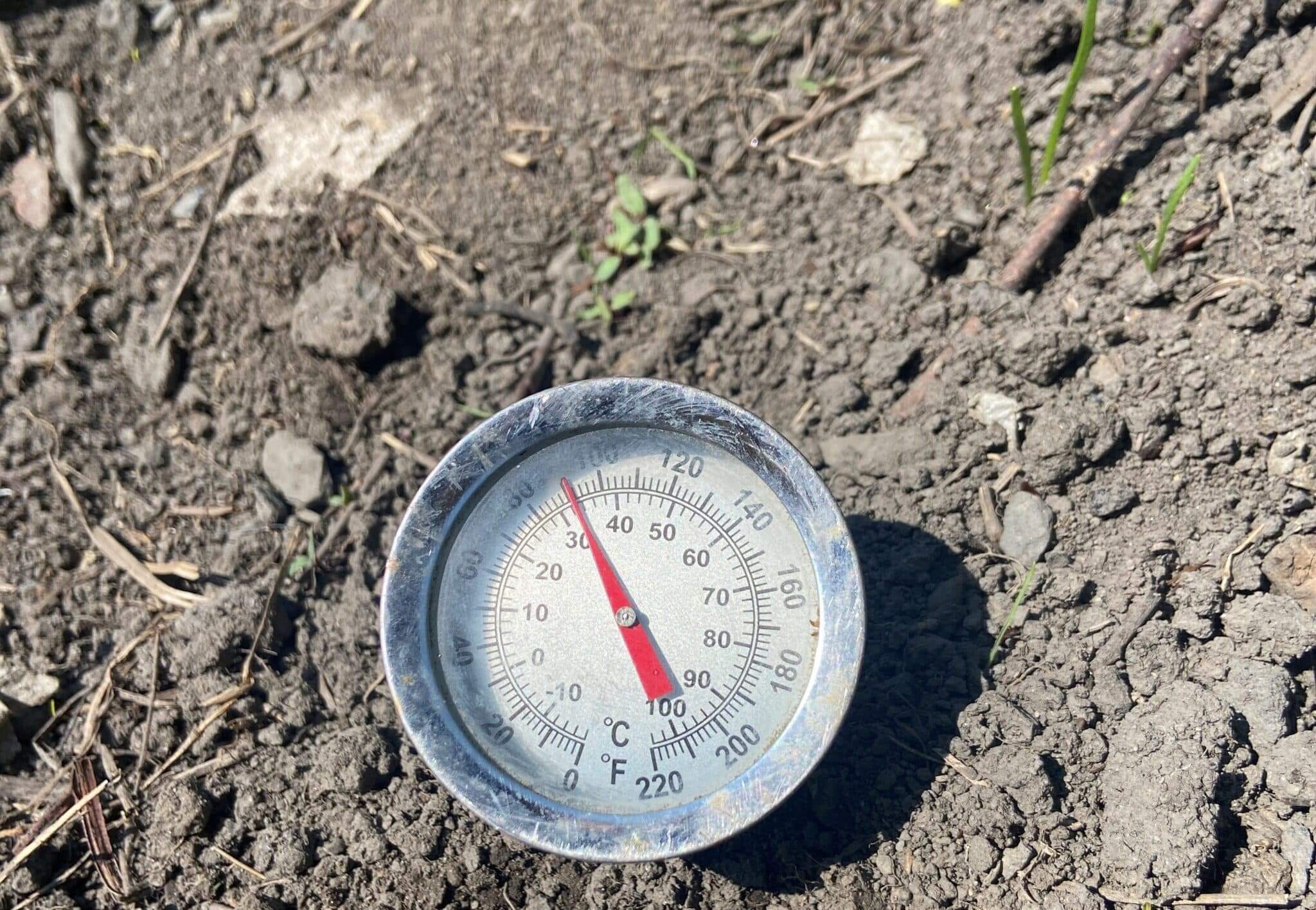Beyond the bird feeder is a regular column by Alys Fowler for Wicked Leeks.
Like every gardener, I am wedded to the weather’s ways and always longing for the opposite. I want rain. We all want rain. And there’s a grief in all of this, too. However cheery the sun is, the landscape around me is looking like August despite the fact it’s June, the rivers are too low and the ponds are drying out. These are all signifiers of the changes afoot to our climate and how we’ve brought them here.
Still, I know from my last garden that it is possible to grow a great deal and water very little, even in the hottest of hot spells. There are many ways to conserve water, but none better than protecting the soil so it isn’t beaten and baked by heat and then whipped away by winds.
The best way to do this is by protecting the soil with leaf cover. Closely neighbouring plants create their own microclimate through transpiration, collectively bringing down the temperature around and under their leaves. Processes like early morning dew trapping this moisture then help humidify the world around their feet.
Last year, on the hottest days any bare soil was measuring 40 degrees and above in my garden, but where the ground cover was rich with different plants, the soil remained in the low 20s all day long.
This new garden is a year away from having such an established base layer and there is still too much bare soil, particularly where I made big changes like taking out the wild plum and some privet hedge.
I know from my last garden that it is possible to grow a great deal and water very little, even in the hottest of hot spells.
The quickest way to create a dense cover for the soil is to allow it to do its own thing. All soils have a seedbank of ruderals and annuals that it calls upon to cover it up when exposed. These are what we call weeds, but in hot weather they are often better adapted to cope then many of our bred plants. The scarlet pimpernel and sow thistles are flowering with great abandon, creating a much-needed source of nectar for flying insects.

So, along the path edges, next to the lettuce and the like, I am relying on the faithful weeds to do their good work. I know that decades of teaching have said that weeds outcompete for moisture and nutrients with our precious chosen plants. And they certainly can do that, but judicious thinning (I prefer this term to weeding), will keep everyone on an even path. Once the sow thistles are starting to set seed, I either dead head them or pull them up.
If you can’t quite cope with the idea of such an unruly garden, then the other choice is to use green manures. White clovers make a wonderful understorey to beans, brassicas and other long season crops. Phacelia is fast growing and very pretty when in flower, and it can be scattered wherever there’s space. Sow in the evening just before rain is predicted, water well and the seed will have a whole night to swell and start germination before the sun beats away the moisture.

In the few places that are just too dry to do anything with right now, near the base of the cherry and hazel for instance, I’ve left dense swards of grasses, docks, sow thistles, sticky willy and nettles.
I noticed a peacock butterfly lying on the nettles last week and there are plenty of aphids and blackfly on some of this greenery, but equally as many ladybird larvae.
Deep down at the base is where the beetles are lurking; it might look unsightly to some, but it’s teaming with life that the rest of the garden needs. These days, what pains me more is not the unruly nature of such plants, but to see bare, baked soil with nothing growing at all.










I’ve been very light on ‘weeding’ this year and enjoying it. Apart from thinning to reduce slugs hiding near my beans early on. Our 5 year old Rowan tree had appreciated the groundshade as have others too. I did let knapweed run riot and to seed last year and am paying the price – it’s everywhere!
This year I decided I was not going to weed at all
It has worked very well, sheltering and conserving moisture
BUT, there’s an area where couch grass has begun to set seed, and has spread…..oops!
I’ll be a bit careful next year to avoid the perennials getting a grip
Also, it may look a bit messy, but for many years I have been chopping up all vegetable waste and prunings and then apply directly as a mulch, especially at the base of shrubs, where it can be hidden. Saves a lot of work and space instead of composting, and works a treat. The blackbirds especially love exploring under the few moist areas in the garden, and the worms make quick work of hiding it all!!
Alys I still watch the edible garden it makes my heart sing! Do you still live there? And what is your garden like now.
I have two drought mitigating systems on my allotment.
Firstly, all the beds are mulched, usually with grass cuttings, leaves, woodchip and compost. I’ve found that a mulched bed will stay damp under the mulch layer for up to 6 weeks without rain, alongside which bare soil beds have long since dried out.
Secondly, I have some beds dug as hugulkultur beds. Rather than mounds, I inversed the idea and dug 3′ deep beds, then filled with logs and twigs, followed by whatever mulch layers I could get. The beds retain rain water than runs down the hill into them (never had any waterlogging problem) and slows it’s flow away into the substrate. And as everything rots down it provides resources for the stuff growing above, in addition to regular mulching from the top.
I do let the weeds grow, and randomly pick them and throw them on top of the mulch layers as extra food. So it’s a very wild allotment, much to the annoyance of a few of the overlooking residents (some of whom own allotments), who want them to be all gardens. There is even one allotment with plastic grass on it!